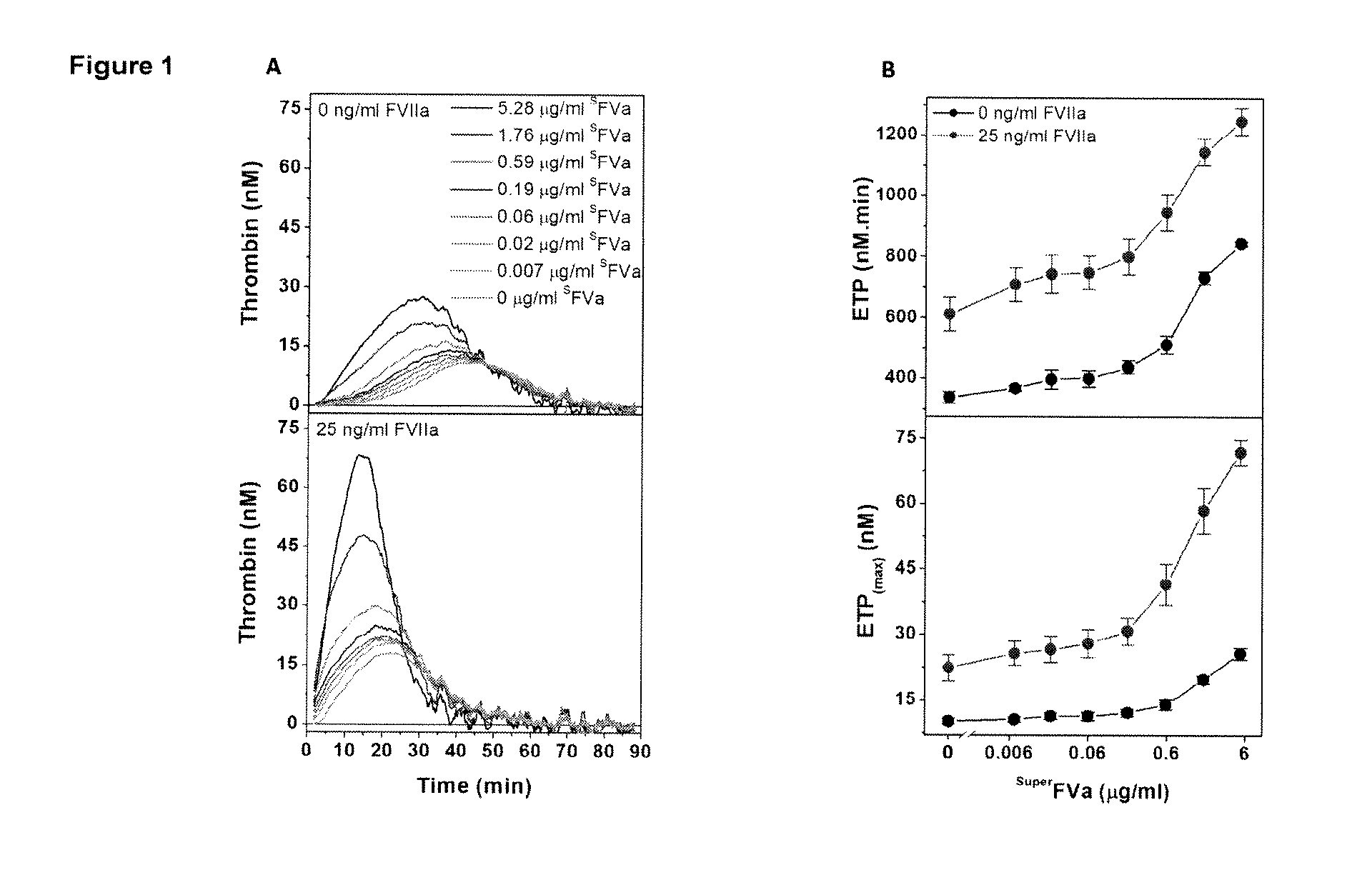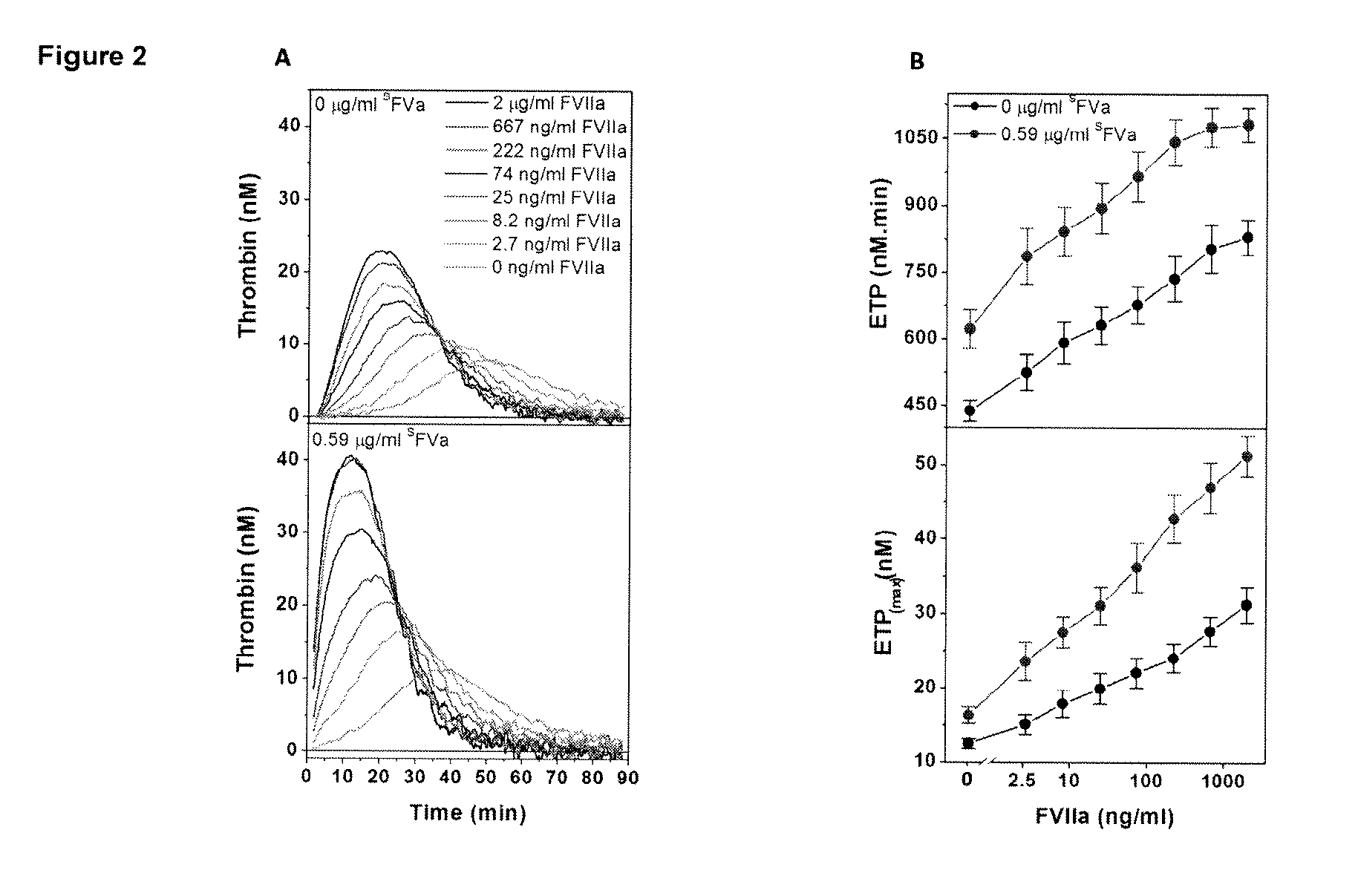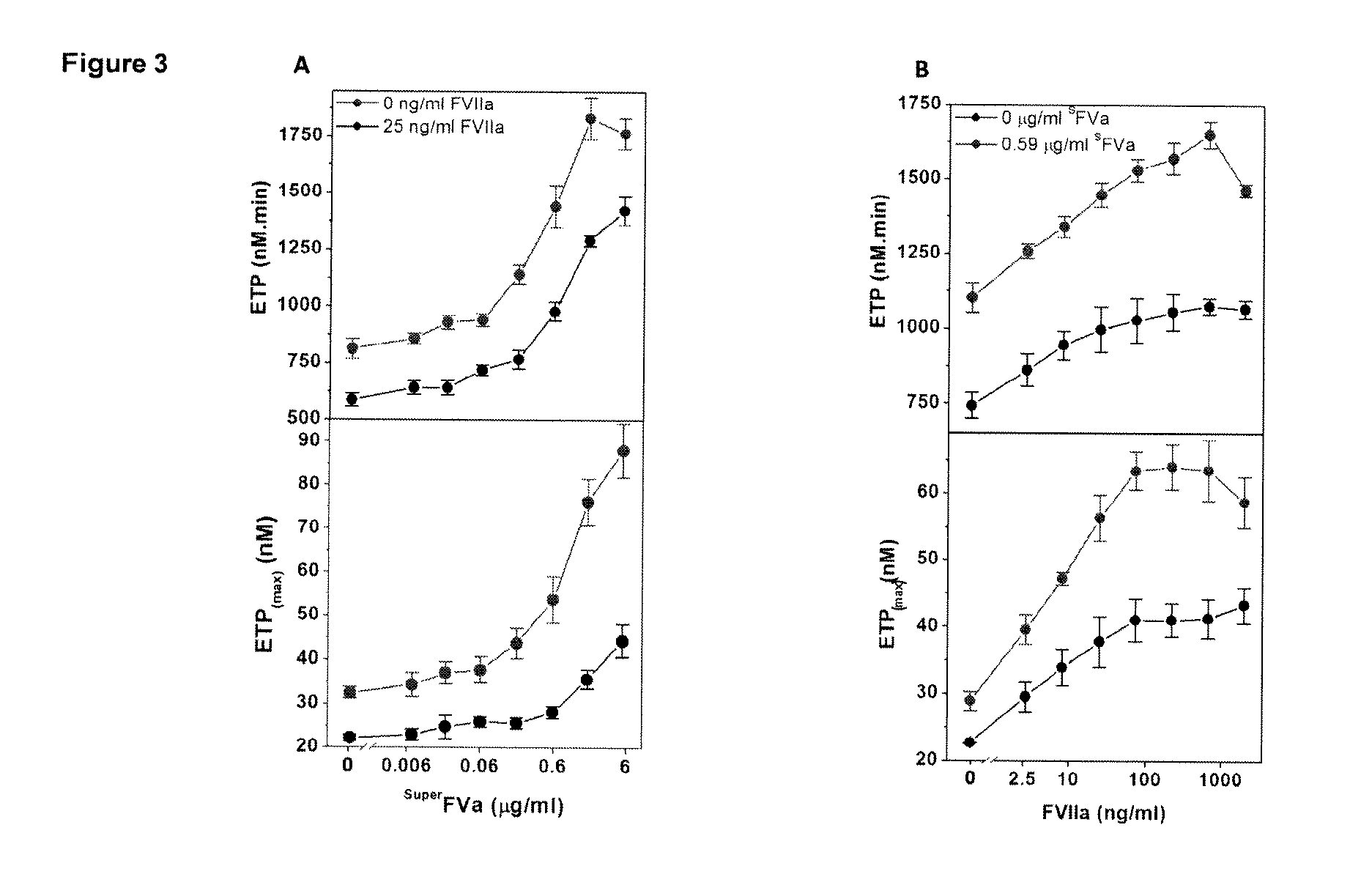Therapy for treatment or prevention of conditions associated with bleeding or hypocoagulation
a technology of apc and apc, applied in the direction of drug composition, extracellular fluid disorder, peptide/protein ingredients, etc., can solve the problems of 5% bleeding rate, no effective treatment available for apc-associated bleeding, no efficacy of clotting factor replacement, etc., to achieve effective treatment or prevention of apc-associated bleeding, the effect of safe, convenient and effectiv
- Summary
- Abstract
- Description
- Claims
- Application Information
AI Technical Summary
Benefits of technology
Problems solved by technology
Method used
Image
Examples
working examples
Materials and Methods Used in Examples
Materials
[0171]Normal pooled human plasma and plasma from human FVIII-deficient patients with and without inhibitors (titer specified in Bethesda Units (BU)) was purchased from George King Bio-Medical (Overland Park, Kans., USA). In addition, plasma and clinical information was obtained from two patients with severe FVIII-deficiency (<1% intrinsic FVIII-activity levels) and inhibitors (titers determined in BU by the clinical laboratory using the Nijmegen assay (17) regularly visiting the Hemophilia Treatment Center at the University of California, San Diego (UCSD) after informed consent was obtained. Patient confidentiality safeguards, sample and data acquisition methods were approved by the UCSD Institutional Review Board. Blood was drawn into 3.8% sodium citrate (pH 5.5) at a 9:1 blood / anticoagulant volume ratio, and processed immediately. Plasma was collected and frozen at −80° C. after centrifugation at 2600×g for 15 minutes. The following r...
example 1
[0191]This example relates to the experiments the results of which are contained in FIGS. 1A and 1B. These experiments illustrate the synergistic effects of FVIIa and superFVa in FVIII-deficient plasma. In these experiments, thrombin generation was determined as ETP and peak height in FVIII-deficient plasma supplemented with increasing concentrations of superFVa in the absence or presence of a fixed concentration of rhFVIIa (NovoSeven®, 25 ng / mL). Panel (A) in the figure is a representative example of ETP at increasing concentrations of superFVa in the absence (top panel) or presence of rhFVIIa (bottom panel). Panel (B) depicts the amount of ETP (Endogenous Thrombin Potential) (top panel) and peak height (bottom panel) achieved with increasing concentrations of superFVa in the absence (black curve) or presence of rhFVIIa (red curve). In the figure the error bars represent standard error of the mean (n≧5). These results statistically demonstrate the synergistic effects of the combina...
example 2
[0192]This example relates to the experiments the results of which are contained in FIGS. 2A and 2B. These experiments further show the synergistic effect of FVIIa and superFVa in FVIII-deficient plasma. In the experiments, thrombin generation was determined as ETP and peak height in FVIII-deficient plasma supplemented with increasing concentrations of rhFVIIa (NovoSeven®) in the absence or presence of a fixed concentration of superFVa (0.59 μg / ml). Panel (A) contains a representative example of ETP at increasing concentrations of rhFVIIa in the absence (top panel) or presence of superFVa (bottom panel). Panel (B) shows ETP (top panel) and peak height (bottom panel) achieved with increasing concentrations of rhFVIIa in the absence (black curve) or presence of superFVa (red curve). The error bars again represent standard error of the mean (n≧5). These results also statistically demonstrate the synergistic effects of the combination on ETP and peak height and based thereon on thrombin...
PUM
| Property | Measurement | Unit |
|---|---|---|
| concentration | aaaaa | aaaaa |
| concentration | aaaaa | aaaaa |
| concentration | aaaaa | aaaaa |
Abstract
Description
Claims
Application Information
 Login to View More
Login to View More - R&D
- Intellectual Property
- Life Sciences
- Materials
- Tech Scout
- Unparalleled Data Quality
- Higher Quality Content
- 60% Fewer Hallucinations
Browse by: Latest US Patents, China's latest patents, Technical Efficacy Thesaurus, Application Domain, Technology Topic, Popular Technical Reports.
© 2025 PatSnap. All rights reserved.Legal|Privacy policy|Modern Slavery Act Transparency Statement|Sitemap|About US| Contact US: help@patsnap.com



